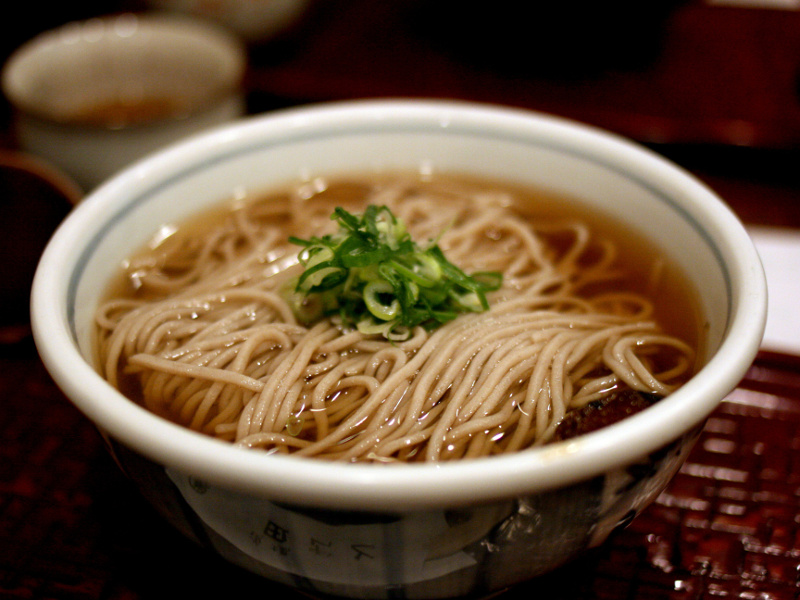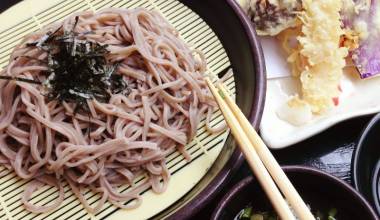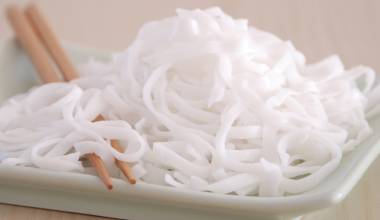Toshikoshi Soba

(Japanese New Year soba noodles)
Image by Christian Kadluba
It is traditional in Japan to slurp up a bowl of toshikoshi (year-end) soba noodles to accompany the joya-no-kane, or ringing of the temple bells at midnight on New Year's Eve (omisoka).
The Japanese have welcomed the New Year with soba noodles for hundreds of years. While the true origins of the tradition are lost in time, there are several theories. Buckwheat is a hardy crop, so buckwheat noodles signify resiliency and strength. In many Asian cultures, long noodles symbolize long life. Buckwheat noodles are also easy to cut, the better to cut off bad luck and debts of the old year. And in the days of yore, Japanese goldsmiths used buckwheat dumplings to pick up stray pieces of gold dust on the floor, thus ensuring buckwheat's association with money and wealth.
Toshikoshi soba (年越しそば) can be eaten hot in broth, or cold with a dipping sauce. You can serve them plain or with a variety of accompaniments and toppings. The one constant is the soba noodles. And these days even some Japanese cheat by using ramen or udon instead.
4 servings
Ingredients
- Soba (buckwheat) noodles -- 1 (10-ounce) package
- Dashi stock -- 6 cups
- Light soy sauce -- 3/4 cup
- Mirin -- 1/2 cup
- Sugar -- 1 tablespoon
- Scallions, sliced into thin rounds -- 4 or 5
Method
- Cook the soba according to package directions. Drain and rinse with cool water. Drain again and set aside.
- Heat the dashi, soy sauce, mirin and sugar in a saucepan over medium flame until the broth comes to a simmer, stirring to dissolve the sugar. Adjust seasoning as desired with soy sauce and mirin.
- Portion the soba noodles into four deep bowls. Ladle hot broth over the noodles and sprinkle each serving with some of the scallions and any other toppings. Serve immediately.
Toshikoshi Soba Variations
- Other toppings for year-end noodles:
- A sheet of nori seaweed, cut into thin shreds.
- Tempura flakes: These can be bought prepared in bags at Japanese markets.
- Kamaboko (fish cake): Sliced into rounds and heated in the broth.
- Shichimi togarashi (Japanese 7-spice blend): Sprinkled on top to season.
- Tsuyu dipping sauce: If you prefer to serve your soba cold without the broth, make a simple sauce to dip the noodles in by mixing together the following ingredients: 1 cup dashi; 1/4 cup light soy sauce; 1/4 cup mirin.




